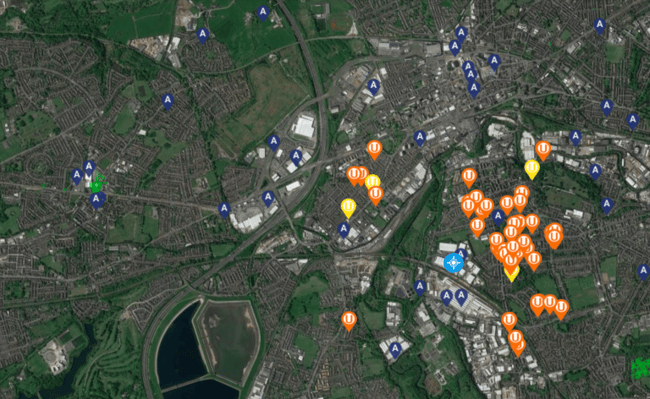
The present system of land registration was brought into force by the Land Registration Act of 1925 and it is operated by HM Land Registry.
Over time various areas of the country were designated areas of compulsory registration by order, so in different parts of the country compulsory registration has been around longer than in others. The last order was made in 1990, so now virtually all transactions in land result in compulsory registration.
One difference is land changing ownership after death, where land is gifted rather than sold; these became compulsorily registrable only in April 1998. Similarly, it became compulsory to register land when a mortgage is created on it in 1998.
The Land Registration Act 2002 leaves the 1925 system substantially in place but enables the future compulsory introduction of electronic conveyancing using electronic signatures to transfer and register property.
Details of registrations are available to any person upon payment of the prescribed fees, either individually through the HMLR website or by making multiple purchases through a basket in Nimbus. The price is the same either way.
HM Land Registry do a fantastic job. Over 85% of land and property in England and Wales is now registered with HM Land Registry. Much of the land owned by the Crown, the aristocracy, and the Church has not been registered, because it has never been sold, which is one of the main triggers for compulsory registration.
Some people think that unregistered land isn’t owned by anyone or refer to it as ‘no man’s land’. But this isn’t right. In England and Wales, all land is owned by somebody, even if the legal owner can’t be identified.
HM Land Registry is aiming to achieve comprehensive registration by 2030, so a little time away. Just because the freehold ownership is not registered, it doesn’t mean you cannot find out information about the land, property and even ownership through other sources, such as planning application history.
At Nimbus we know that all too often a key piece of a puzzle can be a parcel of unregistered land which can not only delay matters but can also be infuriating.
The solution
At Nimbus, we set our data scientists to task and got them to find and link information to this unregistered property and we are delighted to say we have released this information into the platform.
We are the only online resource to provide this anywhere in the country. In both the Nimbus Maps Essentials and Nimbus Maps Elite platform, you will now notice orange pins which represent unregistered land and yellow pins which represent unregistered land with planning: another innovate solution from Nimbus to help the property industry be more productive.
Key reads on the Nimbus blog
At Nimbus, we're committed to making property search, analysis and decision-making faster, smarter and more accessible. That's why we’re thrilled to announce a series of powerful updates that expand and enhance your experience whe...
The post-pandemic world hasn’t just changed where we work—it’s fundamentally reshaped what the office means. In cities across the UK, once-prized corporate spaces are now sitting underutilised, prompting CRE professionals to ask a...
Chancellor Rachel Reeves' Spring Statement of 2025 has unveiled bold measures to rejuvenate the UK's property sector, focusing on tackling the housing shortage, driving economic growth, and improving housing affordability. In this...
UK solar and energy storage market report 2025 Introduction The UK’s solar energy and battery storage sector is undergoing a rapid transformation, bolstered by ambitious climate targets and supportive policies. Solar photovoltaics...
